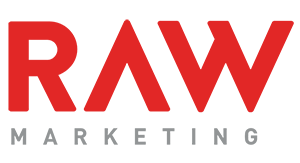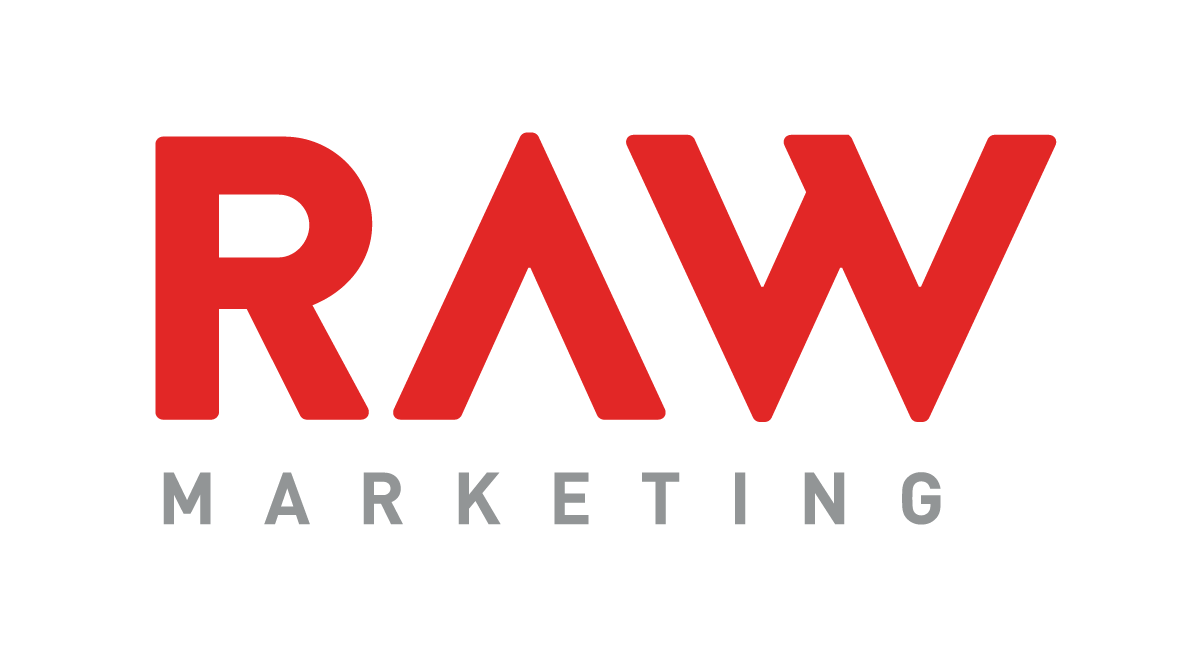RAW Marketing’s Digital Marketing Director, Gillian, has put together an A-Z list of digital marketing terms as a reference for anyone taking their first steps into the world of B2B digital marketing.
Ad Copy – Ad copy is the main text in any clickable ad on a search engine results page (SERP) or another platform with advertising.
Ad Exchange – Automated buying and selling of ad inventory across various networks. An Ad Exchange is auction-based, operating in real time, securing inventory as required.
Artificial Intelligence – Computer systems which are able to perform tasks that require human intelligence – some examples include: visual perception, speech recognition and decision-making.
Attribution – Touchpoints or events (i.e. actions) that a user can take, which contributes to the desired outcome (i.e. conversion). Attribution reflects the events which occur along the user journey that influence an action (e.g. a sign up or purchase). Understanding which touchpoints are associated with conversion, inform effective tactics that can move users down the purchase funnel.
Backlinks – A backlink is a link to your website from another, external website.
Bounce Rate – Is the percentage of visitors who leave your website after visiting just one page.
CTR – This is an abbreviation for click through rate, the number of clicks your ad has received, divided by the number of times your ad has been seen.
Connected TV (CTV) – Devices which can stream digital video – such as gaming consoles and smart television platforms – that allow advertisers to insert their video ads into streamed video content. As broadcast television transitions to digital, advertisers are enabled to further harness the power of digital; reaching desired audiences beyond the scope of what’s possible with more traditional mediums.
Content Gap Analysis – An analysis of the performance of your current content, where it can be improved, and what relevant content you’re missing in comparison to your competitors.
Conversion Rate Optimisation – Or CRO, is the process of improving the number of visitors to your site who convert i.e. fill out a form, sign up, purchase a product. The process is driven by understanding how users behave when they land on your site and what is impeding them from converting.
Cookies – Markers placed on ads which determine information about a user who interacts with it. This includes: location, language, device, time, and other non-PII information.
Note: Non-PII (Non-Personally Identifiable Information) won’t reveal any sensitive information about a user such as home address, name or card details etc.
CPC – This is short for cost per click, the price you pay for every click of your ad.
CPL – Stands for cost per lead. CPL is calculated by dividing the total media spend by the number of leads generated.
Cross-platform Advertising – Omnichannel marketing, which leverages a variety of media platforms– e.g. TV, SEO, eDM, Display Ads, Video, Mobile, CTV etc.
Frequency Targeting – Times a user is exposed to a marketing message, which drives a desired outcome – these are considered unique user impressions. Multiple exposures to an ads messaging overtime is more likely to drive desired outcomes. This can also have adverse effects, where too much exposure can reduce impact or alienate prospects.
Geotargeting – Targeting consumers with ads served on the basis of their location (i.e. country, region, city, zip code). This method is restricted in some locations by law.
GA – The abbreviation of Google Analytics. Google Analytics is a free, web traffic analysis tool that provides real-time statistics and analysis of user interaction with a website. Google analytics allows marketers to analyse website visitors, with the objective of interpreting and optimising a website’s performance.
Google Ads AKA Google Adwords – Is Google’s advertising service where advertisers bid on keywords to have their ads appear in search engine results.
Google Display Network – Also referred to as GDN. Is a network of websites that display Google Ads.
Google Search Console – A service offered by Google that helps you monitor and maintain your site’s presence in SERPs.
GTM – Google Tag Manager (GTM) is a free tool that allows marketers to manage JavaScript and HTML tags used for tracking and analytics on a website.
HTML – An acronym for Hypertext Markup Language. It’s used to mark up and describe all the content (font, colour, etc…) on a web page so browsers can display them correctly.
Impression – The number of times your ad has been seen (but not clicked)
Internal Linking – An internal link is a hyperlink on a page on your website that links to another page on your website.
Keyword Research – Keyword research is a task that identifies popular keywords that are entered into search engines in an effort to understand how high the demand is for specific keywords and how difficult it would be to compete for these terms in SERPs.
LinkedIn Conversion Tracking – This is how conversions are tracked through LinkedIn. Conversion tracking is essential for B2B marketing as it gathers insights into post-click and view-through conversions of your LinkedIn ad campaigns, giving you the ability to measure the impact and ROI of your ads.
LinkedIn Insights Tag – A tag that powers LinkedIn conversion tracking, retargeting, and web analytics for LinkedIn ad campaigns.
Local SEO – Local SEO is the practice of optimising your online presence to generate traffic and conversions through location-based searches.
Look-Alike Modelling – Use of machine learning to identify new audiences who have a similar user profile to a known audience. Modelling audiences in this way allows you to send targeted messaging at scale, to people who are more likely to take the desired action.
Meta Description – Is a snippet of text that summarises a webpage’s content.
Native Ads – Paid ads which match the look & feel of the website, app or social platform they’re served on. These ads are seen to be a more “trusted” source of advertising and typically receive higher engagement because of their seamless integration with existing site content. There are two main types:
- In-feed Ads: placed in articles and content feeds e.g. editorial listings on a news pages that are mixed with native ad units, providing an uninterrupted flow
- Content Recommendation Ads: displayed alongside other ads, paid and editorial content
Pixel – Pieces of code that are placed on websites to help gather useful information about visitors to a website and their behaviours on the page.
Programmatic Buying – An automated process of buying and selling ad inventory through real-time bidding, facilitated by real-time bidding ad tech and several data sources.
Responsive Design – Is the design of a website that enables all pages on your site to render correctly on different devices and screen sizes (most commonly referenced in relation to the mobile-friendliness of a website).
Search Engine Marketing (SEM) – SEM is a tactic used in paid media advertising to give sites higher rankings in SERPs for increased visibility.
Search Engine Optimisation (SEO) – SEO seeks to increase quantity and quality of traffic to a website through organic search engine results – enabling higher rankings in search engine result pages (SERPs) for increased visibility and perceived credibility.
SEO Technical Audit – An SEO technical audit ensures that every SEO element that search engines require a website to have in place is ticked off and functioning. An audit reviews all SEO technical aspects of a site including (but not limited to) page load speed, URL structure, broken links, and mobile friendliness.
Sitemap – Is a file where the webmaster provides a list and information of all the pages on a website.
Social Ads – Ads served on social media platforms (e.g. LinkedIn, Facebook, Twitter etc.). Each platform has unique ad specifications which allow the content to integrate into their sites seamlessly.
Tags – Code inserted within a webpage that triggers a http(s) request to an ad server, providing information which allows optimised ads to load. This includes cookies, URLs, screen resolution and browser information. This has minimal impact on lag times and end-user experiences.
User Generated Content – Also known as UGC, is content generated by users or customers usually on social media.
UX – An acronym for User Experience. It is a discipline that evaluates a website (or system’s user experience) focusing on ease of use, value, practicality, and efficiency.
UX Audit – An audit of the user experience of a website. The audit is guided by the core purpose of the website leaving contact details, purchasing products etc…
Video Ads – This ad type leverages sight, sound and motion to capture user attention. This is an effective means of building awareness, driving traffic and generating leads. Popular ad formats include:
- In-stream videos: Skippable and non-skippable ads which are typically 15″-30″ in length
- In-banner videos: Hosted in display ads and often 300x600px in size to accommodate text and buttons, delivering better engagement and brand recognition.
If you’d like to find out more about RAW Marketing’s approach to digital feel free to contact Gillian directly on [email protected]


